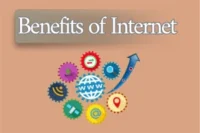The Ultimate Guide to Internet Service Providers (ISPs)
Published: 22 Apr 2025
The Internet has become an essential part of daily life, and Internet Service Providers (ISPs) play a crucial role in ensuring seamless connectivity. An ISP is a company that provides individuals and businesses with access to the internet, offering various connection types such as fiber, cable, DSL, and satellite.

Beyond internet access, ISPs also provide additional services like email hosting, domain registration, and web hosting. Understanding how ISPs work, the different service tiers, and how to choose the right provider can help users make informed decisions for their connectivity needs.
This article will explore Internet Service Providers (ISPs) in detail, covering their functions and types, and explaining how to choose the right one.
What is an ISP?
An Internet Service Provider (ISP) is a company that provides internet access and related services to individuals and organizations. ISPs maintain the necessary infrastructure, including telecommunication lines and equipment, to establish an internet presence in a specific geographic area.
Key Functions of ISPs
- Enabling internet access for customers
- Offering additional services like email, domain registration, and web hosting
- Providing various internet connection types such as cable, fiber, DSL, and satellite
- Delivering both broadband and non-broadband connections
High-Speed Broadband Criteria
According to the Federal Communications Commission (FCC), an internet connection is classified as high-speed broadband if it meets the following:
- Download speed: At least 25 Mbps
- Upload speed: At least 3 Mbps
ISPs are sometimes referred to as internet access providers. Additionally, ISP can stand for independent service provider, distinguishing it from traditional telecommunications companies.

How Do ISPs Work?
ISPs operate by connecting to high-speed internet lines, allowing them to provide services to consumers and businesses.
ISP Infrastructure
- Large data centers with thousands of servers managing customer traffic
- Multiple ISPs are connected to backbone routing centers for efficient distribution
ISP Tiers
ISPs are categorized into three tiers based on their network reach and role:
Tier 1 ISPs
- Have a global reach and own vast physical network infrastructure
- Exchange traffic freely with other Tier 1 providers
- Sell network access to Tier 2 ISPs
Examples: AT&T, CenturyLink, Sprint, Verizon
Tier 2 ISPs
- Operate on a regional or national level
- Must purchase access from Tier 1 ISPs
- Serve consumer and business customers
Examples: Comcast, Cox Communications, CTS Telecom
Tier 3 ISPs
- Depend on higher-tier ISPs to provide internet services
- Serve local businesses and consumers
Examples: Small regional and local internet providers
Types of Internet Services Offered by ISPs
ISPs offer various connection types to suit different needs:
1. Dial-up Internet
- Uses standard telephone lines
- Extremely slow and outdated
- Not suitable for modern web use
- Download speed: up to 56 Kbps
- Upload speed: up to 33.6 Kbps
2. Cable Internet
- Uses coaxial cables (same as TV cables)
- Low latency, ideal for streaming and gaming
- Download speed: 10 to 500 Mbps
- Upload speed: 5 to 50 Mbps
3. Fiber Internet
- Uses fiber optic cables for high-speed data transmission
- Best for gamers and heavy internet users
- Download speed: 250 to 1,000 Mbps
- Upload speed: 250 to 1,000 Mbps
4. DSL (Digital Subscriber Line)
- Uses telephone lines for internet access
- Slower than fiber and cable, but widely available
- Good for users in rural areas
- Download speed: 5 to 35 Mbps
- Upload speed: 1 to 10 Mbps
5. Satellite Internet
- Uses communication satellites to provide internet services
- Best for remote locations
- Download speed: 12 to 100 Mbps
- Upload speed: 3 Mbps
6. Wireless ISPs (WISPs)
- Uses radio signals to deliver the internet wirelessly
- Ideal for rural and underserved areas
- Requires line-of-sight to the tower
- Download speed: 1 to 100 Mbps
- Upload speed: 1 to 20 Mbps
7. Broadband Internet
- A general term for high-speed internet access
- Includes DSL, cable, fiber, satellite, and wireless
- Always-on connection, faster than dial-up
- Download speed: 25+ Mbps
- Upload speed: 3+ Mbps
Most ISPs offer a combination of these services based on regional availability.
Top ISPs in the U.S.
According to research from BroadbandNow and FCC data, there are over 2,900 ISPs in the United States. The top five in terms of population coverage are:
- HughesNet
- Viasat Internet
- AT&T Wireless
- Verizon
- T-Mobile
How to Choose the Best ISP
Choosing the right Internet Service Provider (ISP) is crucial for ensuring a reliable and fast connection that meets your needs.
1. Coverage Area
- Check which ISPs provide service in your area
- Rural areas may have limited options
2. Types of Services Offered
- Compare cable, fiber, DSL, and satellite
- Look for features like online security, email, and web hosting
- Check if mesh Wi-Fi is offered
3. Internet Speed Requirements
- Match bandwidth to your needs:
- Gaming and video conferencing: Higher speeds
- 4K streaming: At least 25 Mbps
4. Pricing and Bundles
- Look for bundles including internet, phone, and TV
- Consider discounts, data caps, equipment rental, and contracts
5. Consumer Ratings
- Read unbiased customer reviews
- Check for reliability and quality customer service
ISP Throttling and Net Neutrality
In the age of digital dependency, the battle between internet freedom and corporate control intensifies. At the heart of this conflict lies ISP throttling and the ongoing debate over net neutrality.
ISP Throttling
- ISPs may slow down speeds to manage network congestion or enforce data limits
- Affects streaming, gaming, and video quality
Net Neutrality
- The principle that all internet traffic should be treated equally
- Opposes throttling or favoring specific websites or services
Conclusion
Choosing the right Internet Service Provider (ISP) depends on location, service types, speed needs, and pricing. Whether you prefer fiber, cable, DSL, or satellite, understanding ISP tiers, throttling, and data policies can help you make smarter decisions. Stay informed to enjoy better connectivity and avoid hidden limitations.
If you found this article helpful, don’t forget to leave a comment and share your thoughts! Feel free to ask any questions or share your experiences with different ISPs.
FAQs: Internet Service Providers
Here are some commonly asked questions about Internet Service Providers to help you better understand their services.
An ISP (Internet Service Provider) provides internet access and services like email, domain registration, and web hosting.
Cable, fiber, DSL, satellite, and wireless, each varies in speed, cost, and availability.
Consider coverage, connection type, speed, price, customer reviews, and extra services.
- Browsing: 5–10 Mbps
- HD streaming: 15–25 Mbps
- 4K and gaming: 25+ Mbps
- Video calls or working from home: 50+ Mbps
ISPs may limit your speed during congestion or after reaching data limits.
Use tools like Fast.com, Speedtest.net, or Google’s internet speed test.
It’s the idea that ISPs must treat all internet traffic equally, without slowing or blocking specific content.
Yes, but some still throttle your speeds after heavy usage.
Satellite providers like HughesNet and Viasat are common rural solutions. DSL may also be available.
- Tier 1: Own global networks
- Tier 2: Regional providers that buy access from Tier 1
- Tier 3: Local ISPs that rely on higher-tier providers

- Be Respectful
- Stay Relevant
- Stay Positive
- True Feedback
- Encourage Discussion
- Avoid Spamming
- No Fake News
- Don't Copy-Paste
- No Personal Attacks

- Be Respectful
- Stay Relevant
- Stay Positive
- True Feedback
- Encourage Discussion
- Avoid Spamming
- No Fake News
- Don't Copy-Paste
- No Personal Attacks





